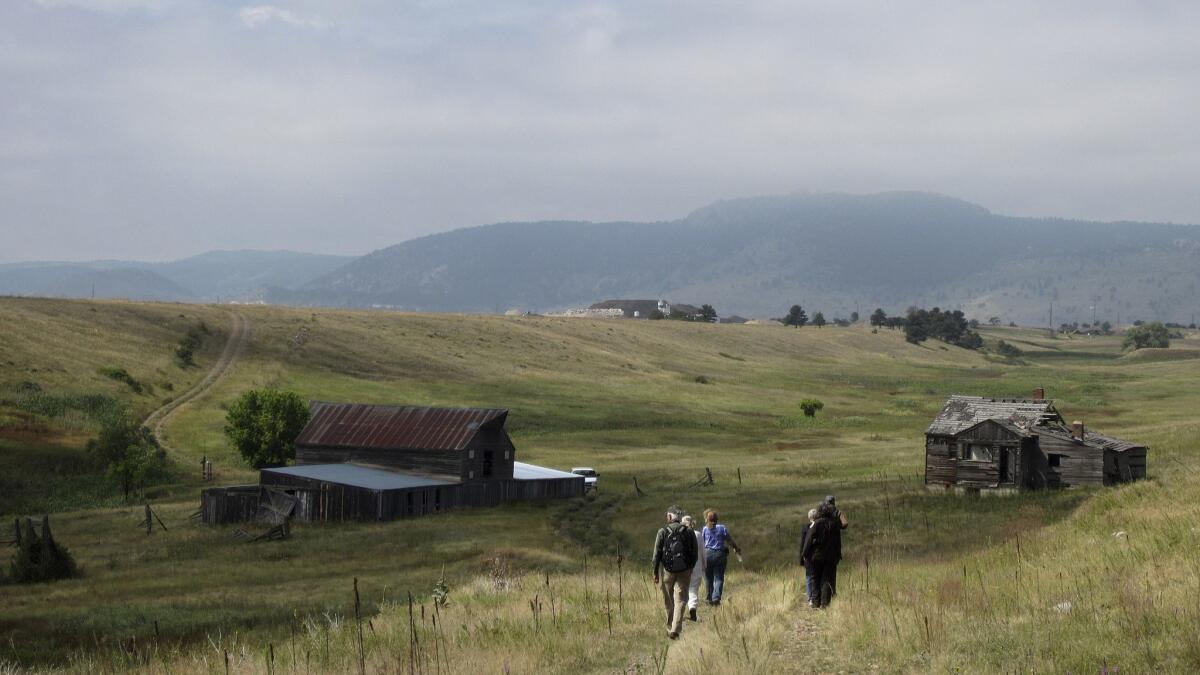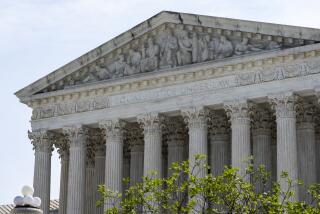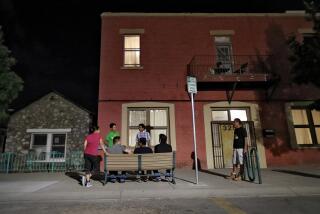Public won’t be barred from wildlife refuge that once bordered a nuclear site

- Share via
Reporting from denver — A federal judge Thursday denied a bid to stop the opening of the Rocky Flats National Wildlife Refuge next month, saying opponents failed to prove that the public would suffer “irreparable harm” if allowed on to the site, which surrounds a former nuclear weapons plant.
Opponents had asked for a preliminary injunction to keep the refuge closed until the court hears their case asking for more testing.
The decision is a setback for those who believe opening the refuge, about 15 miles northwest of Denver, presents a serious public health threat from the risk of inhaling plutonium particles in the dust and dirt.
U.S. District Court Judge Philip Brimmer said the plaintiffs did not present “qualitative evidence” of the health risks associated with inhaling plutonium at the exposure levels found at the refuge or quantify the increased health risks that could result from opening the refuge on Sept. 15.
The wildlife refuge sits on 5,237 acres that served as a buffer zone around the former Rocky Flats nuclear weapons plant, considered at one point among the most contaminated places on earth. The plant, which made plutonium triggers for nuclear weapons, was raided in 1989 by the FBI after reports of fires, leaking barrels of plutonium and the mishandling of hazardous chemicals. It was eventually closed down.
The Environmental Protection Agency finished its cleanup of the site in 2006.
The U.S. Fish and Wildlife Service was given the buffer zone to open as a wildlife refuge, but opponents believe it contains dangerous levels of plutonium. And they say allowing hikers, bikers and horses onto it will kick up dust that may contain those radioactive particles.
The EPA declared the site safe for “unrestricted use” in 2007, and the Colorado Department of Public Health and Environment also said it was safe, despite the presence of low levels of plutonium.
Attorney Randall Weiner, who represents the group of citizens, scientists and activists in the case, described the ruling Thursday as one “more twist and turn in the litigation to protect the public.”
He said the central dispute in the case — whether more environmental review is necessary — is still very much in play.
“Our case will clearly demonstrate that the government does not have an up-to-date assessment of risks to the environment and human health from allowing unlimited public visits to the refuge,” Weiner said.
He said that even if the refuge opens Sept. 15, it could be shut down later if the opponents prevail.
The U.S. Fish and Wildlife Service issued a statement saying it was moving forward with plans to open the refuge and that “walking, hiking, biking, horseback riding, wildlife observation, and photography will be just a few of the outdoor activities available.”
“We are working to open the refuge to public access because we are confident in the conclusions and recommendations from public health experts at the state and federal levels indicating that the refuge is safe for visitors, our employees, and surrounding communities,” a spokesman for the service said.
Kelly is a special correspondent.
UPDATES:
5:10 p.m.: The article was updated with statements from the U.S. Fish and Wildlife Service.
The article was originally published at 3:50 p.m.
More to Read
Sign up for Essential California
The most important California stories and recommendations in your inbox every morning.
You may occasionally receive promotional content from the Los Angeles Times.










